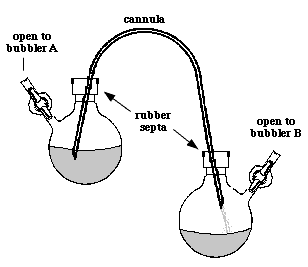The Glassware Gallery, Cannulas:
http://www.ilpi.com/inorganic/glassware/cannula.html
:

""A cannula is a long thin metal tube that is used to transfer air-sensitive liquids or solutions. Cannulas come in different bore sizes and lengths. A typical cannula is two to three feet long and is made up of 16-22 gauge (.047"-.016") tubing. The ends are pointed so they can be inserted through septa. In many respects a cannula is like a very long double-ended syringe needle.""
You'r right, it is not as simple as it sounds, to take a TLC sample from a vacuum system.
Even an injection needle with a long tip through a rubber stopper in one neck of a multi-necked reaction flask can't be used UNDER vacuum.
However when it would be a very special one with a little valve IN the needle connector it would work.
Then you could suck up a few drops of your reaction mix, close the valve, and take off the injector part with your drops of reaction-fluid in it. LT/
PS: you can silversolder such a tiny valve to a long injection needle, or a long cannula with the top part of a cut injection needle.
However just connecting a glass valve with on one end a long hard silicone tubing (goes through a rubber stopper into your flask) to a cut injection needle (use only top part of needle, valve BELOW it) with a thin piece of vacuum tubing (preferably hard silicone) will do the job also, just connect the sucking part to the cut needle.